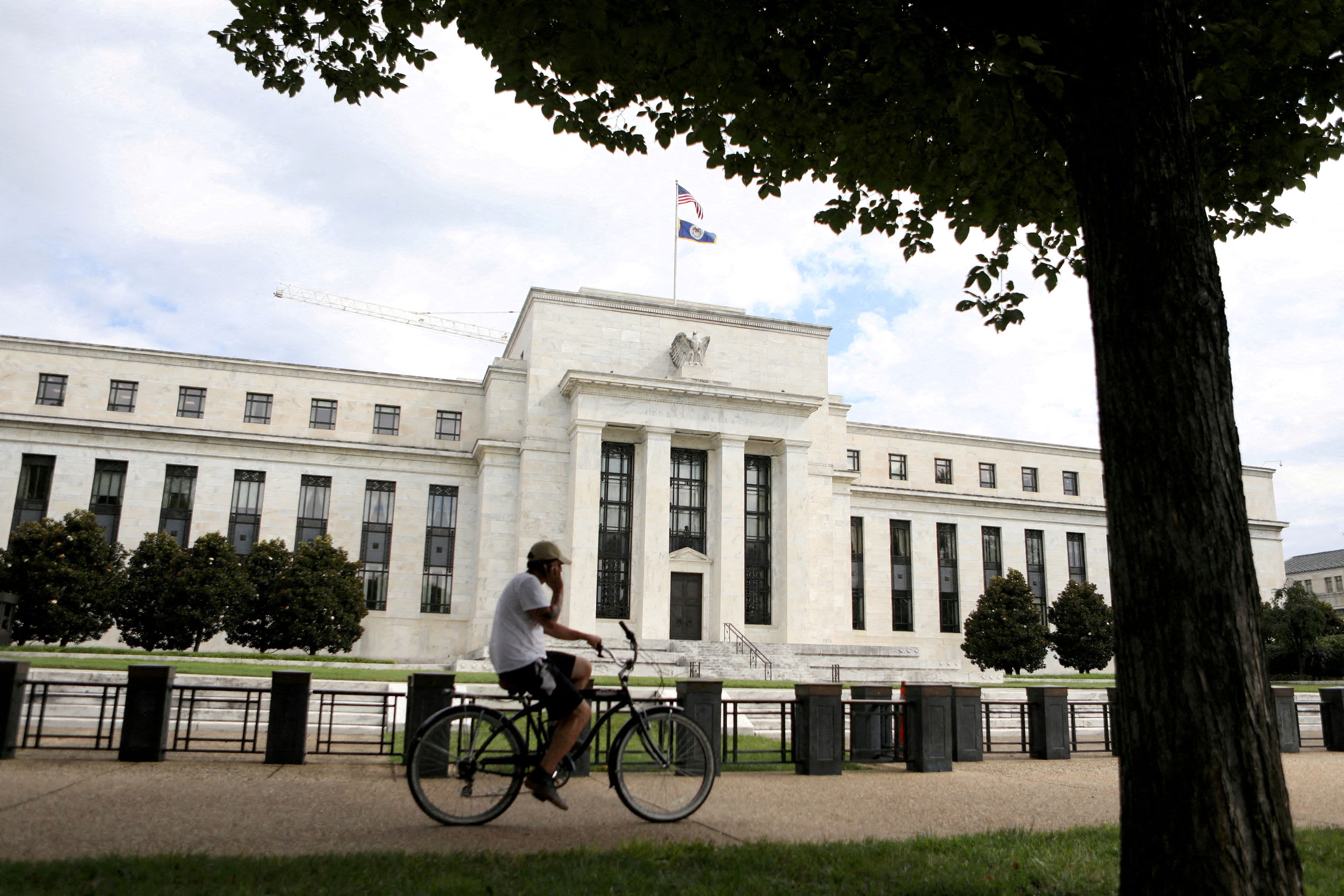Fitch predicts that the Federal Reserve will adopt a gradual approach to monetary policy due to ongoing efforts to address inflation concerns.

- The Fed is predicted by Fitch to make 10 rate cuts totaling 250 basis points, spaced out over 25 months.
- In Asia, the rating agency anticipates further cuts in China, while predicting that the Bank of Japan has more leeway to increase interest rates.
Fitch predicts that the U.S. Federal Reserve's easing cycle will be "mild" when it begins cutting rates at its September policy meeting, according to a note from the ratings agency.
Fitch predicts that the central bank will make a 25-basis-point cut at its September and December meetings, followed by a 125-basis-point reduction in 2025 and a 75-basis-point reduction in 2026.
Fitch reported that the total 250 basis points of cuts in 10 moves across 25 months is less than the median cut from peak rates to bottom in previous Fed easing cycles up to the mid-1950s, which was 470 basis points, with a median duration of 8 months.
The report stated that one reason for the anticipated gradual pace of Fed easing is the remaining work required to address inflation.
Despite the Fed's inflation target of 2%, CPI inflation remains above that level.
Fitch noted that the decline in the core inflation rate, excluding food and energy prices, was mainly due to the drop in automobile prices, which may not persist.
According to a Labor Department report released on Wednesday, U.S. inflation in August decreased to its lowest level since February 2021.
In August, the consumer price index increased by 2.5% year over year, which was below the 2.6% forecast by Dow Jones and represented its lowest rate of growth in 3.5 years. Additionally, on a month-to-month basis, inflation rose by 0.2% from July.
The 12-month core inflation rate remained at 3.2%, in line with the forecast, while Core CPI, which does not include volatile food and energy prices, increased by 0.3% for the month, slightly higher than the predicted 0.2%.
Fitch pointed out that the Fed's inflation challenges over the past three and a half years may lead to caution among FOMC members, as it took longer than expected to control inflation and central banks' understanding of inflation drivers has been exposed.
Dovish China, hawkish Japan
In Asia, Fitch anticipates that rate cuts will persist in China, as the People's Bank of China's July rate reduction caught market participants off guard. Specifically, the PBOC reduced the 1-year MLF rate from 2.5% to 2.3% in July.
The PBOC may cut rates further due to the recent weakening of the US dollar and expected Fed rate cuts, as deflationary pressures become entrenched in China, according to a report.
Fitch stated that producer, export, and house prices are all decreasing, bond yields are declining, core CPI inflation has fallen to 0.3%, and we have lowered our CPI forecasts.
The June outlook report predicted China's inflation rate to be 0.8% in 2024, but now it is expected to be 0.5% in the same year.
In 2024, the ratings agency expects an additional 10 basis points of cuts, while in 2025, it anticipates another 20 basis points of cuts for China.
Fitch observed that the Bank of Japan is going against the global trend of easing policies and raised rates more aggressively than expected in July. This indicates its increasing belief that reflation is now firmly established.
Fitch stated that the current economic situation, with core inflation above the BOJ's target for 23 consecutive months and companies prepared to offer "ongoing" and "sizable" wages, is vastly different from the "lost decade" in the 1990s when wages stagnated amid persistent deflation.
The BOJ's objective of a " virtuous wage-price cycle" is being met, which increases the BOJ's confidence in its ability to raise rates towards neutral settings.
Fitch anticipates that the BOJ's benchmark policy rate will reach 0.5% by the end of 2024 and 0.75% in 2025. Additionally, we predict that the policy rate will reach 1% by the end of 2026, which is above the consensus. If the BOJ adopts a more hawkish stance, it could have global repercussions.
Markets
You might also like
- Delinquencies are on the rise while a record number of consumers are making minimum credit card payments.
- U.S. economy state weighs on little changed treasury yields.
- European markets predicted to sustain positive growth.
- Trump hints at imposing a 10% tariff on China starting in February.
- David Einhorn believes we are currently in the "Fartcoin" phase of the market cycle.



















